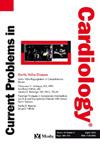Atherosclerosis and sudden cardiac death in athletes
IF 3.3
3区 医学
Q2 CARDIAC & CARDIOVASCULAR SYSTEMS
引用次数: 0
Abstract
Asymptomatic atherosclerotic cardiovascular disease (ASCVD) is the leading cause of sudden cardiac death (SCD) in athletes over 35 years of age. Despite their high physical fitness, athletes in this age group remain vulnerable to undetected coronary atherosclerosis, which predisposes them to plaque rupture and acute coronary thrombosis. In contrast, congenital coronary anomalies are the predominant cause of SCD in younger athletes. While SCD accounts for over 90 % of sports-related cardiovascular mortality, identifying at-risk individuals remains challenging due to the silent progression of coronary artery disease (CAD). Current screening methods, such as electrocardiography and stress testing, have limited sensitivity for detecting asymptomatic ASCVD, underscoring the need for advanced imaging modalities like coronary computed tomography angiography (CCTA) in high-risk populations. Risk mitigation requires a multifaceted approach: Tailored pre-participation cardiovascular screening incorporating age-specific risk factors, lifestyle interventions targeting atherosclerosis progression, education for early recognition of cardiac symptoms, and widespread availability of automated external defibrillators (AEDs) during athletic events. Emerging evidence supports integrating biomarkers, for instance, coronary calcium scoring and genetic testing for congenital anomalies, to enhance risk stratification. A comprehensive strategy combining targeted screening, advanced diagnostics, and evidence-based interventions is critical to reducing SCD incidence and improving outcomes in athletes.
动脉粥样硬化与运动员心源性猝死
无症状动脉粥样硬化性心血管疾病(ASCVD)是35岁以上运动员心脏性猝死(SCD)的主要原因。尽管他们的身体素质很高,但这个年龄段的运动员仍然容易出现未被发现的冠状动脉粥样硬化,这使他们容易发生斑块破裂和急性冠状动脉血栓形成。相反,先天性冠状动脉异常是年轻运动员SCD的主要原因。虽然SCD占运动相关心血管死亡率的90%以上,但由于冠状动脉疾病(CAD)的无声进展,识别高危人群仍然具有挑战性。目前的筛查方法,如心电图和压力测试,对检测无症状ASCVD的敏感性有限,强调需要先进的成像方式,如冠状动脉计算机断层血管造影(CCTA)在高危人群中。降低风险需要多方面的方法:量身定制的参与前心血管筛查,纳入特定年龄的风险因素,针对动脉粥样硬化进展的生活方式干预,早期识别心脏症状的教育,以及在体育比赛期间广泛使用自动体外除颤器(aed)。新出现的证据支持整合生物标志物,例如冠状动脉钙评分和先天性异常的基因检测,以加强风险分层。结合针对性筛查、先进诊断和循证干预的综合策略对于降低运动员SCD发病率和改善预后至关重要。
本文章由计算机程序翻译,如有差异,请以英文原文为准。
求助全文
约1分钟内获得全文
求助全文
来源期刊

Current Problems in Cardiology
医学-心血管系统
CiteScore
4.80
自引率
2.40%
发文量
392
审稿时长
6 days
期刊介绍:
Under the editorial leadership of noted cardiologist Dr. Hector O. Ventura, Current Problems in Cardiology provides focused, comprehensive coverage of important clinical topics in cardiology. Each monthly issues, addresses a selected clinical problem or condition, including pathophysiology, invasive and noninvasive diagnosis, drug therapy, surgical management, and rehabilitation; or explores the clinical applications of a diagnostic modality or a particular category of drugs. Critical commentary from the distinguished editorial board accompanies each monograph, providing readers with additional insights. An extensive bibliography in each issue saves hours of library research.
 求助内容:
求助内容: 应助结果提醒方式:
应助结果提醒方式:


